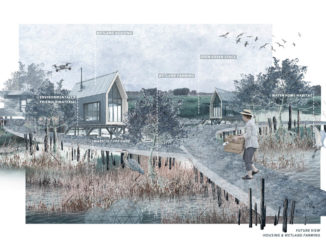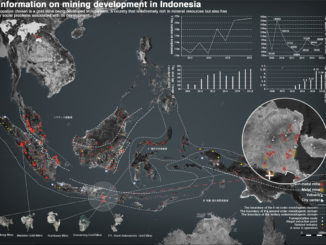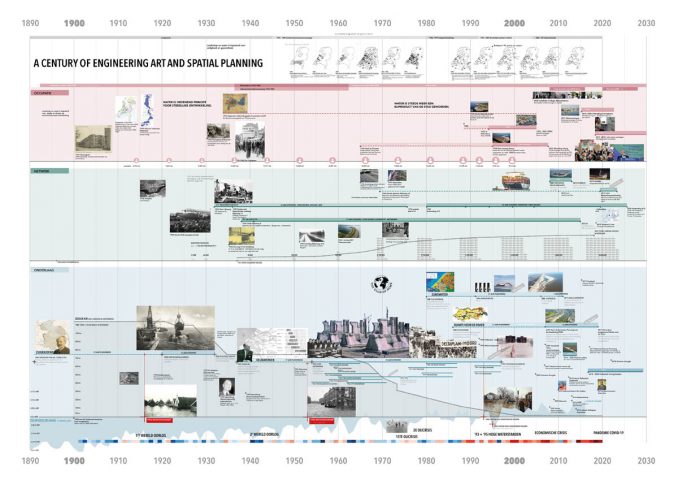
This graduation project, whose title is a play on ‘high tide’ and ‘high time’, is about punctually addressing the profound consequences of the global climate crisis. It gives a long-term perspective on the urbanization brief for the 21st century as a timely preparation for the effects of climate change. This takes the form of four strategies, depending on the site in question; attack, defend, retreat and connect. The current Dutch urbanization brief takes little notice of the increasing risks of flooding due the climate to the climate crisis. And this while the internationally renowned Dutch water safety policy has been indelibly linked with urbanization and infrastructure for the past hundred years. The lessons of the past are the essential building blocks of the future.
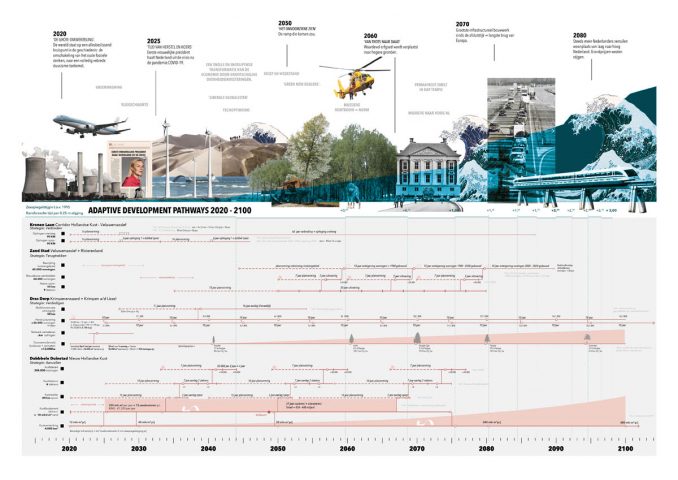
I have always been fascinated by the way the Dutch control and exploit water. That said, I am astonished to see that the pattern of urbanization in this country pays so little heed to the current climate crisis, when now is the time to take decisions that will affect generations to come. The way we act and adopt measures is closely interwoven with the prevailing culture and the times we live in.
There is no way we can prevent the rise in sea level. How fast and to what extent this will happen depends for a large part on how quickly we reduce carbon emissions. We cannot afford to wait for certainty and have to prepare ourselves now for the uncertain times ahead. We have to consider the choices we have to make, and the choices left to us in the future, depending on whether the sea level rise exceeds or falls short of expectations.
An analysis of the history of the Delta Works shows that putting large-scale public works in place takes time. Time will be needed to develop an all-inclusive intervention from the complexity of the brief, to carefully weigh up all the interests and, most importantly, for society to become aware of and accept the way things are.
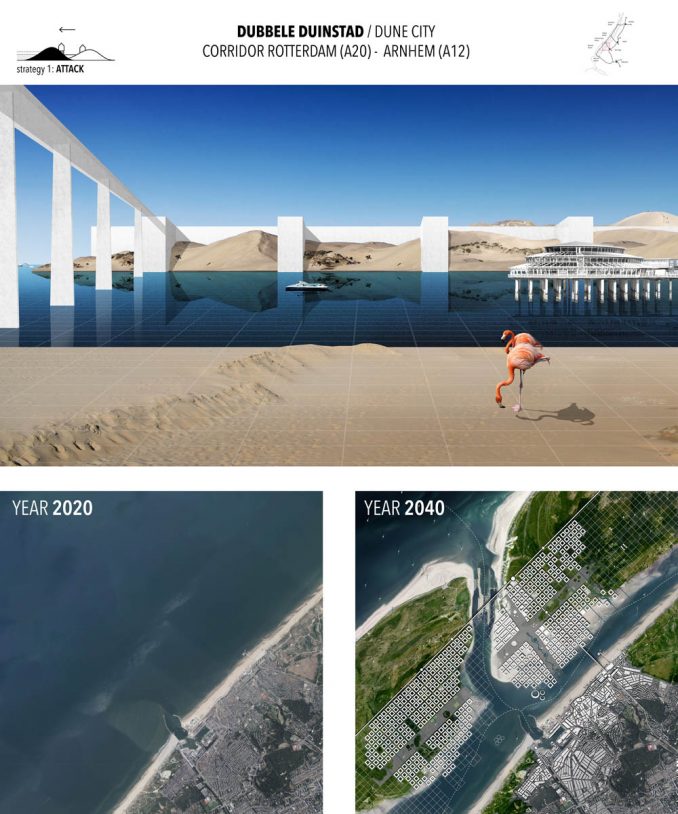
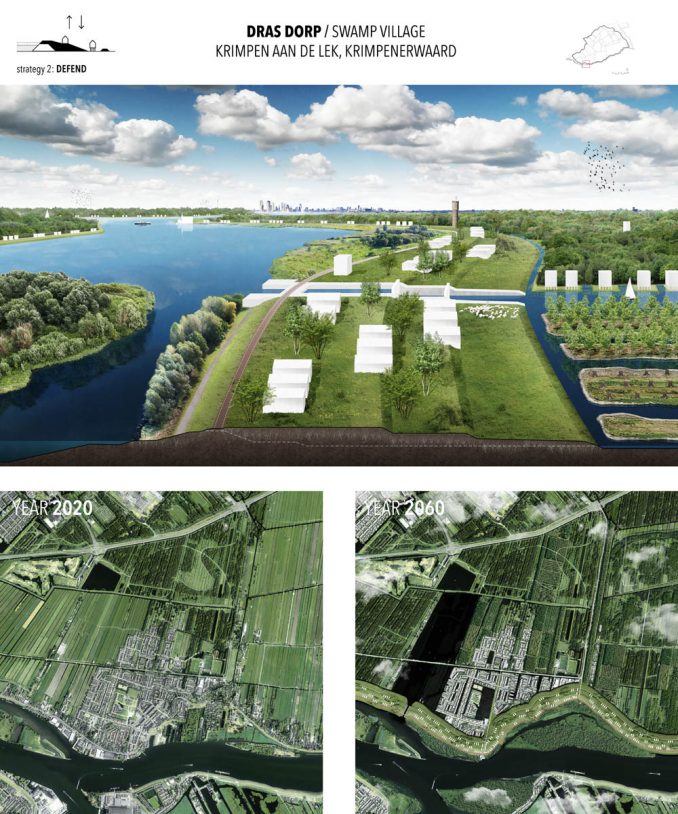
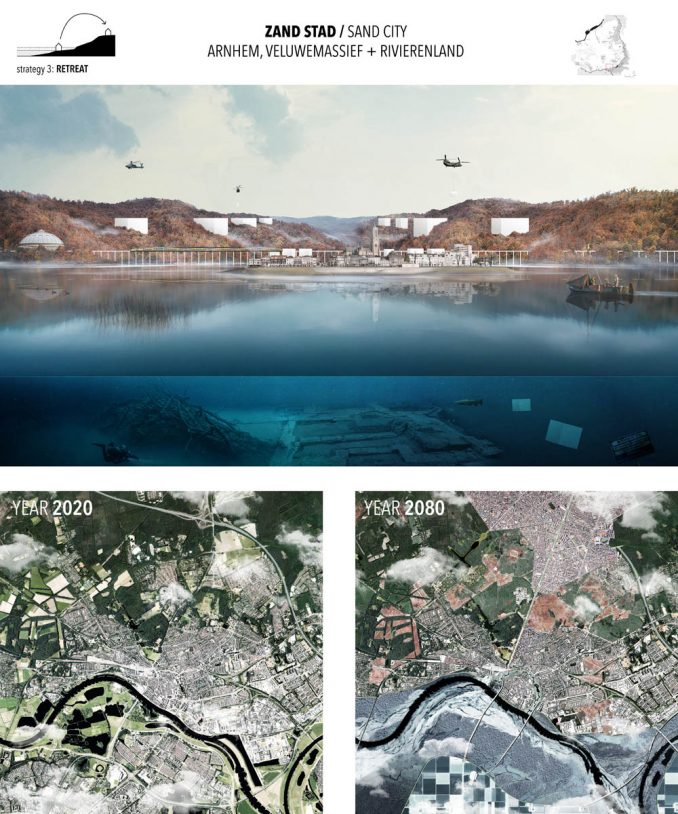
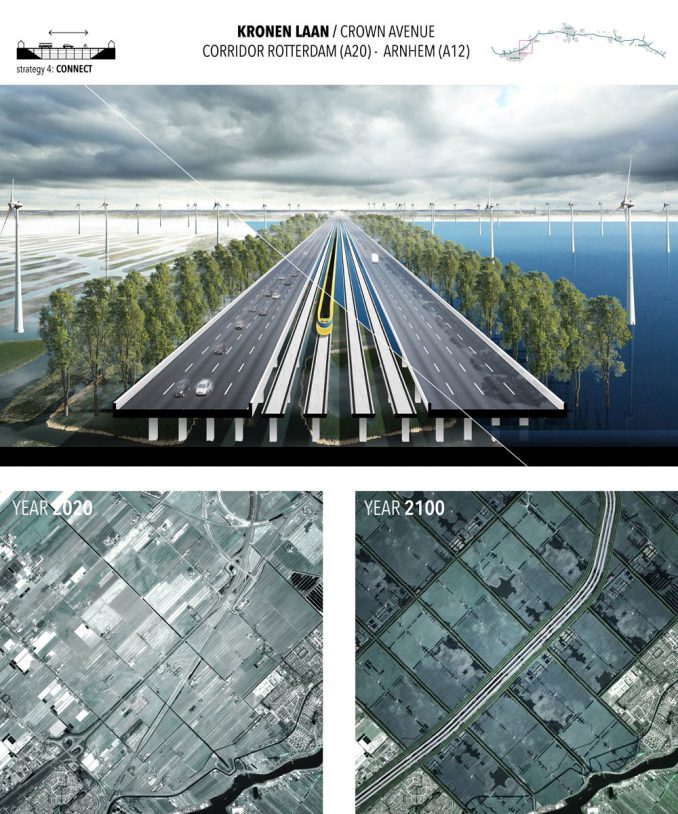
The project develops four perspectives for action for four typical Dutch landscapes, illustrating them with an existing place. The four strategies demonstrate the specificity of the water safety brief and how this can give us new spatial typologies. The seemingly contradictory strategies of attack, defend, retreat and connect are illustrated by, respectively, Scheveningen (Dubbele Duinstad), Krimpen aan de Lek (Dras Dorp). Arnhem (Zand Stad) and the A20 corridor (Kronen Laan). The perspectives for action introduce a new approach to designing the Netherlands in the long term.
Student Project | High Tide: how we can anticipate the pressing consequences of the climate in urban development | Freek van Riet
Student: Freek van Riet
University: Rotterdam Academy of Architecture and Urban Design
Supervisors: Riëtte Bosch, Dirk Sijmons, Thijs van Spaandonk and Paul Gerretsen


